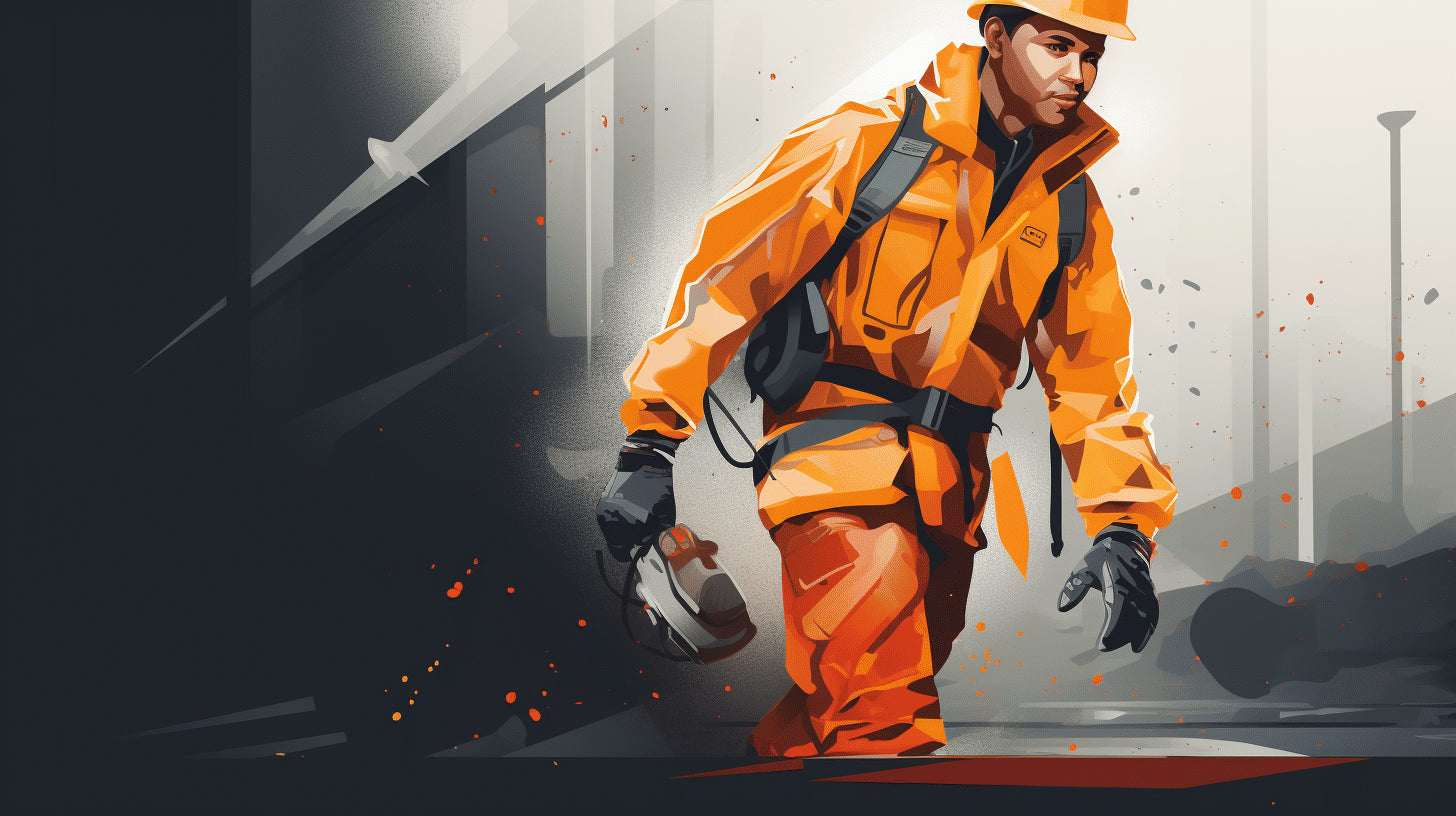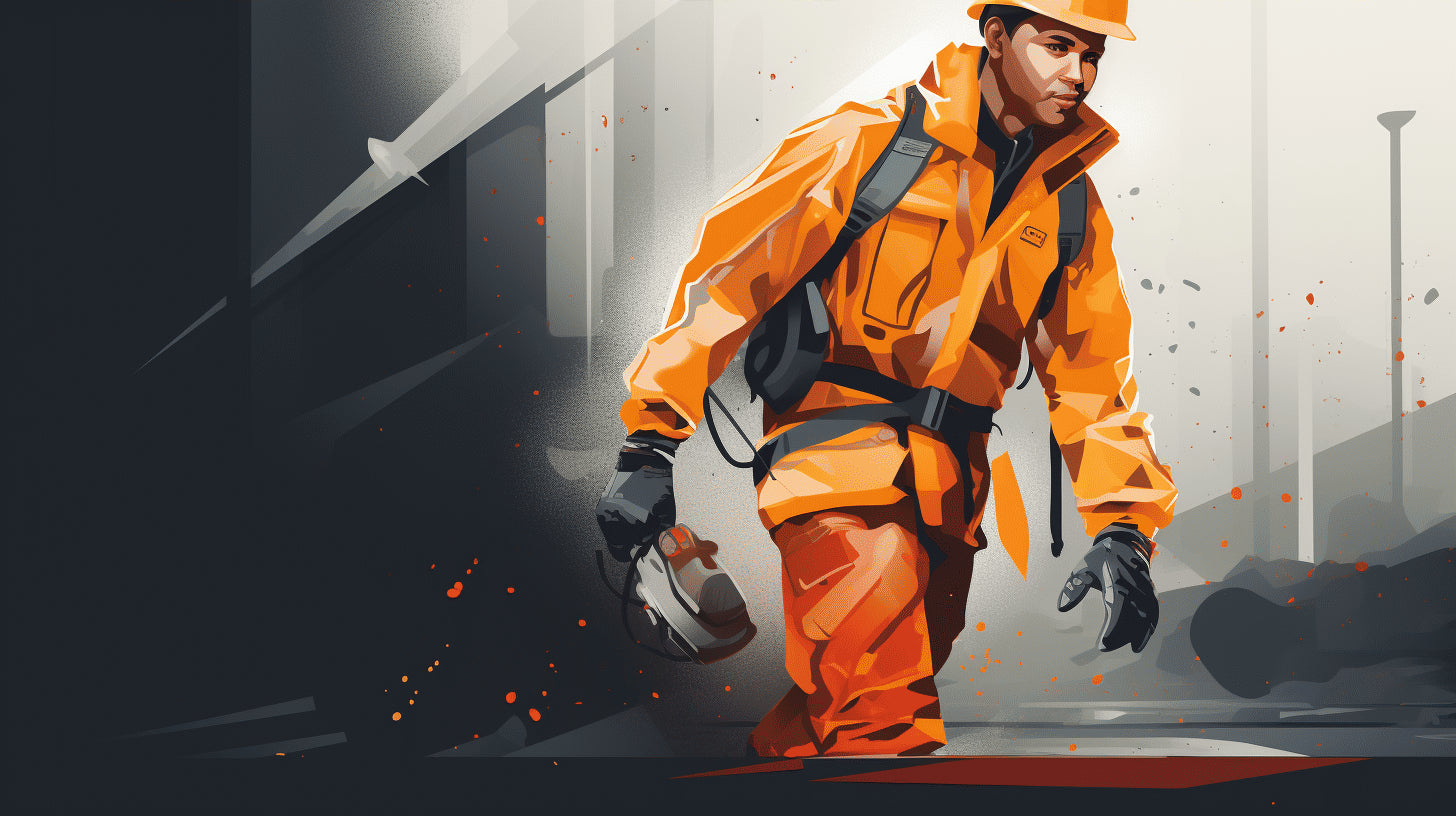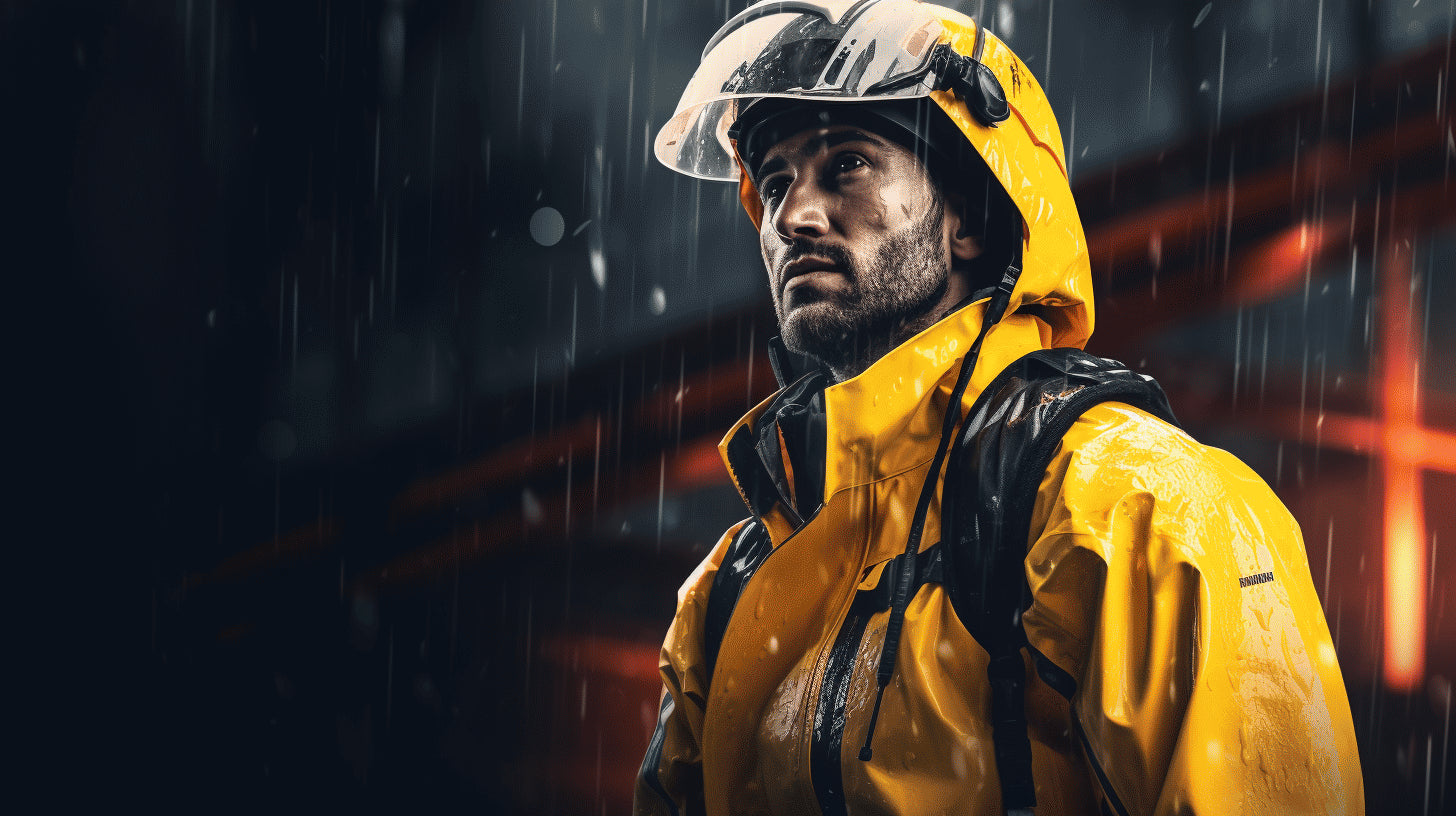Rain, while refreshing and essential for life on earth, can also disrupt certain activities; construction tasks being one of them. As a construction worker, battling the elements isn’t just an inconvenience—it could potentially turn into a matter of safety. In cases where the work cannot simply pause for the rain to pass, having dependable rain gear becomes critical. This article explores the importance of proper rain gear for construction workers, offers handy tips for selecting the right attire, investigates the evolution of rain jacket technology, and delves into specific gear recommendations. Not only that, we'll provide an overview of the rain gear market before wrapping things up. Get ready to dive into the intricate world of construction rainwear and learn how to stay dry on the job in even the trickiest of weather conditions.
Importance of Suitable Rain Gear for Construction Workers
When the skies rumble and open up, construction work doesn't simply grind to a halt. Despite the rain-soaked conditions, brave builders don their helmets and press onward. Yet, they face a unique set of challenges that are amplified by the rainy conditions, which can be mitigated by using the right kind of rain gear. Not only does it keep them dry, it can also play a significant role in maintaining their safety.
The proper rain gear provides crucial protection against various environment-related challenges, which help construction workers execute their daily tasks without hindrance, even under duress.
Some of the essential benefits include:
- Resistance to Cold and Wetness: In rainy conditions, hypothermia can be a real danger. Wetness reduces body temperature, a concern rain gear tackles effectively.
- Improved Visibility: Weather can often impair visibility on site which can lead to accidents. Rain gear usually boasts bright, reflective colors, ensuring workers are clearly visible.
- Safety from Slip and Fall: Slippery, mud-laden construction sites are precarious. Rain gear often includes slip-resistant boots to ensure secure footing.
However, it's not all about utility. Workers need rain gear that's comfortable and non-restrictive. If the gear doesn't fit comfortably or hampers movement, it could become a safety hazard. Moreover, breathability is essential. 'Swampy' gear will only lead to discomfort and distraction, potentially affecting productivity.
Therefore, it's crucial to invest in quality rain gear that ticks all the boxes.
So, the next time the heavens open, remember that these downpours aren't merely inconveniences for construction workers. They're safety challenges that can be faced successfully with the right provisions. After all, a safe worker is an effective worker, and ensuring that the team is well-equipped to handle any weather is paramount when it comes to construction.
Tips for Choosing the Right Rain Gear
Choosing the right rain gear can be a daunting task, especially with the variety of choices available on the market. Whether you require construction rain gear or you're a weather-conscious eco-warrior, certain crucial factors come into play. These include material selection, functionality, weight concerns, and key characteristics. Let's delve deeper.
Material Consideration
We cannot overemphasize the importance of choosing the right material. Rain gears are typically made from rubber, PVC, and coated nylons — each with its strengths and limitations. For instance, rubber provides excellent waterproofing but might not be as comfortable or lightweight as coated nylons. These factors might influence your decision, particularly if you're looking for eco-friendly rain gear. Consider your work climate and the type of work you'd be doing when deciding on the material.
Functionality
The next aspect to consider is functionality, which often depends on individual needs and circumstances. Some may need an all-weather gear, while others might be looking for something specifically for heavy downpours. Moreover, a good rain gear should have useful features like sealed seams, storm flaps, and venting options, offering the wearer full coverage and protection against harsh weather elements.
Weight Concerns
Weight is another crucial factor when choosing rain gear. It's always best to keep things light and convenient, especially if you spend considerable time outdoors. For optimum protection without adding excessive bulkiness, we recommend buying the thinnest, lightest rain jacket complete with a hood. Plus, consider adding waterproof pants in your rain gear arsenal.
Key Characteristics
Lastly, pay attention to crucial features that enhance the durability and performance of your rain gear. These include rain gears with reinforced knees and elbows, gear with high visibility for safety in low-light conditions, and gear designed with easy accessibility and custom fit in mind. It's also worth noting that a budget-friendly gear may not always be the best, so ensure you strike a balance between cost and quality.
In essence, choosing the perfect rain gear requires thoughtful considerations. Remember, the best rain gear is the one that meets your specific needs without compromising comfort, durability, or safety.
The Evolution of Rain Jacket Technology
When torrential downpours start to batter the city pavements or mountain trails, a reliable rain jacket is a must-have for every wardrobe. From humble beginnings as straightforward waterproof layers, rain jackets have evolved considerably in recent years. Advancements in modern technology and a relentless drive for better performance is propelling this evolution into fascinating realms. Here's a glimpse at how this all-important gear is changing, one fabric layer at a time.
The early rain jackets were simple and practical: long, heavy-duty coats made from rubber or wax-treated fabrics. While these materials provided excellent rain protection, they lacked other key aspects such as breathability and comfort. Progress in fabric technology offered a solution: the development of water-resistant yet breathable fabrics that wick away sweat while keeping the wearer dry. These innovations allowed rain jackets to be more functional and comfortable over a more extensive range of climates and activities.
Today, rain jacket technology is continuously improving, with brands relentlessly experimenting with new fabrics to enhance comfort and performance. These advancements have led to the creation of thinner, lighter, and more breathable rain jackets that easily fit in a hiker's backpack or a city-goer's purse. Several brands have even been successful in creating waterproof fabrics that mimic the disguise of normal clothing, allowing wearers to remain chic while battling the elements.
But the future of rain jackets isn't just about the casual wearer or the outdoor enthusiast. There's also a push for innovation in heavy industry applications. Brands are developing new waterproof fabrics geared towards various industries, including construction, where workers are often exposed to challenging weather conditions while performing physically demanding tasks. These advancements aim to provide the same level of rain protection while promoting greater mobility and comfort for heavy-duty use.
As each year rolls by, the technology behind rain jackets continues to leap forward. In fact, it's safe to say that we're currently witnessing the redefinition of functionality and usability in rain jacket technology. From protecting hikers in the great outdoors to construction workers laboriously building our cities, this evolution is undeniably exciting and vital.
So the next time a rainstorm hits, be thankful for the technology at play, ensuring you stay dry. Remember – while rain jackets may seem like simple pieces of apparel, a lot of research and innovation goes into every stitch and seam. Rain or shine, the continuous evolution of rain jacket technology has got you covered.
Specific Rain Gear Recommendations
Whether you're an avid outdoors enthusiast, a construction worker, or simply someone who values staying dry when the heavens open, investing in quality rain gear is essential. This piece aims to guide you on various rain gear products that not only offer protection but enhance visibility, keeping you safe, especially in poor weather conditions. Let's explore the options!
High Visibility Jackets
For starters, high-visibility jackets are a stellar investment to tackle the weather's unpredictability. These jackets, including the ANSI Class rain jackets, distinguish wearers amid downpours, foggy, or low-light conditions, making them ideal for construction workers or those engaging in outdoor activities.
- Most high-visibility jackets merge waterproof and wind-proof features, ensuring a solid defense against undesirable weather.
- Plus, their vibrantly colored fabric coupled with reflective stripes significantly boost visibility.
Waterproof Boots
Rain or shine, your feet need optimum protection. This is where waterproof boots kick in. These boots are crafted primarily to keep your feet dry, providing comfort even amid puddles and muddy terrain. Remember, a soggy unfortunate situation could ruin your entire day or negatively impact your work performance, so investing in solid waterproof boots is a smart move.
Pants and Long Raincoats
Confronting relentless rains requires full-body protection, and that's where the ANSI Class rain pants and long raincoats come in.
- Hi-vis bib style pants designed for construction work are waterproof, keeping you dry and adding a safety layer through their enhanced visibility.
- Long raincoats are another choice. They cover a large portion of your body, providing comprehensive protection against rain.
Affordable Rainwear
If the budget is a concern, fear not, for there are endless options available. Conveying that affordable rainwear lacks quality would be misleading. You'll find countless budget-friendly rainwear that doesn't compromise on functionality. The trick lies in assessing your requirements and making a mindful selection, ensuring it matches your specific needs.
Reflective Rain Gear
Should you often find yourself on the roads during rain or fog, it's beneficial to have rain gear with reflective strips. This feature amplifies your visibility to passing vehicles, shielding you from potential mishaps. Like a vigilant guard, the reflective strips keep you safe under a dimly lit sky.
Premium and Reliable Brands
Lastly, let's highlight well-known brands renowned for their quality rain gear. Brands like Carhartt, North Face, and Columbia are famous for their durable and reliable products. Remember: Opting for proven brands imbues assurance of performance, longevity, and overall satisfaction.
Indeed, rain gear isn't just about staying dry; it's an amalgamation of comfort, safety visibility, and pricing. We hope this array of recommendations aids in your hunt for the perfect rain gear. Stay dry and safe out there!
Rain Gear Market Overview
When we think of decided climates around the world, such as the tropical rainy areas or the frosty regions where rainfall is a year-round affair, the importance of rain gear becomes evident. Be it a sudden downpour in the urban metropolis, a rainstorm in the countryside or consistent showers during an outdoor adventure, rain gear is the cardinal shield against such unpredictable weather.
One segment that stands out in the sales of rain gear, according to the latest data from 2020, is the "jacket" category. Rain jackets, in particular, have become the go-to protection for various demographics, ranging from working professionals to athletes, and even the younger population.
Popularity amongst Diverse Demographics
Jackets undoubtedly secured the limelight in the rain gear market in 2020. Here's a glance at how multiple demographics embraced jackets as their preferred rain protection:
- Working Professionals: Given the need for a combination of utility and aesthetics, working professionals have shown a strong preference for rain jackets. They consider these rain-protective garments as practical solutions that don't compromise on their professional appearance.
- Athletes and Outdoor Enthusiasts: Athletes and those with a progressive bend towards outdoor activities often face erratic weather changes. They have significantly contributed to rain jacket sales, considering these weatherproof jackets as an essential part of their gear.
- Youngsters: The younger generation is another major contributor, especially with the advent of colorful and trendy rain jackets available in the market. These jackets, beyond their primary use, have become somewhat of a trend, adding a fashionable edge to daily wear.
Remember, "A rain jacket is not just about protection; it's about making a statement."
The dominance of jackets in the rain gear market is a testament to a simple yet critical truth: functionality and aesthetics are not mutually exclusive. You can have a practical raincoat that also ticks the fashion boxes, bridging the gap between necessity and style.
The rain gear market’s undercurrents show no signs of changing soon. If the trends suggest anything, it's that the popularity of rain jackets is set to grow even more diverse and robust. Whether you're a busy professional dashing through the rain to make it to your next meeting, an athlete training through showers, or a teenager making a style statement, there's a rain jacket waiting to be your perfect wet-weather companion.
Conclusion
To wrap it all up, rain gear plays a crucial role in a construction worker’s toolkit. Proper rain gear does more than merely keep the rain off; it provides comfort, safety, increased productivity, and a sense of well-being amongst the workers. Investing in high-quality rain gear like Hurricane Raingear can be a game-changer. Remember, in this industry, being better prepared enables workers to tackle any weather conditions fearlessly, fostering a safe and efficient working environment. The power to remain unhindered by the rain and continue the hard work lies in your hands. Make the right choice today, and let your work speak for itself come rain or shine.
Frequently Asked Questions
-
What are the essential rain gear items for construction workers?
The essential rain gear items for construction workers include waterproof jackets, pants, boots, gloves, and hats. It's also recommended to have a waterproof backpack or tool bag to protect important items.
-
What features should I look for in a waterproof jacket for construction work?
When choosing a waterproof jacket for construction work, look for features like durable materials (such as nylon or polyester with waterproof coatings), sealed seams, a hood with adjustable drawstrings, and plenty of pockets for storage.
-
Are there waterproof work boots specifically designed for construction workers?
Yes, there are several brands that offer waterproof work boots designed for construction workers. Look for boots with a waterproof membrane, slip-resistant soles, reinforced toe caps, and ankle support for added safety.
-
Do I need special gloves for working in the rain?
It's recommended to use waterproof gloves or gloves with a water-resistant coating when working in the rain. These gloves provide protection against moisture while maintaining dexterity and grip for various construction tasks.
-
What type of hat should I wear to stay dry on the job?
To stay dry on the job, wear a waterproof hat with a wide brim to shield your face and neck from rain. Look for hats made from materials like polyester or nylon that offer water resistance and quick-drying capabilities.























Leave a comment
This site is protected by hCaptcha and the hCaptcha Privacy Policy and Terms of Service apply.